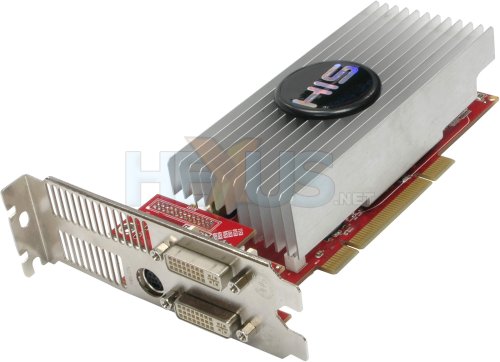Grahpics card manufacturer HIS has taken a number of fairly normal concepts and combined them into something with at least a pinch of novelty.
The company's new Radeon X1300 product is passively cooled, making it silent; nothing new there. Further, it's low profile; nothing new in that either, until you combine it with the passive cooling system and the fact that it's a PCIc device. To facilitate effective cooling of the X1300, HIS has made the X1300 a short and fat card, so while it's 'low profile' in a vertical sense, it takes up two backplane slots.
Perhaps even more interesting is the fact that HIS says this is the first PCI Radeon X1300 with dual-DVI on it. Only one of the DVI ports is dual link, but still, that's better than having analogue VGA on there. To keep the card short, HIS has used the second backplane slot for the second DVI port.

All things considered, then, quite an interesting card, although we can't see people rushing to buy one. Still, with such a number of favourable aspects rolled into one, we're sure a few will snap it up.
HEXUS.links
Product page on the HIS website.













